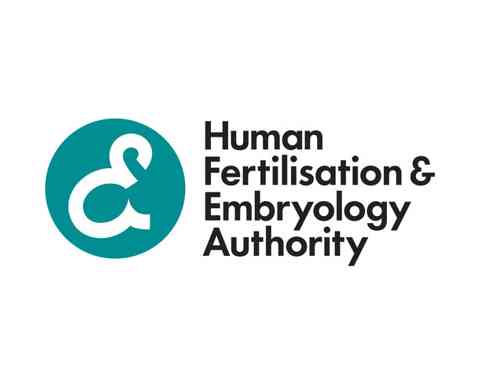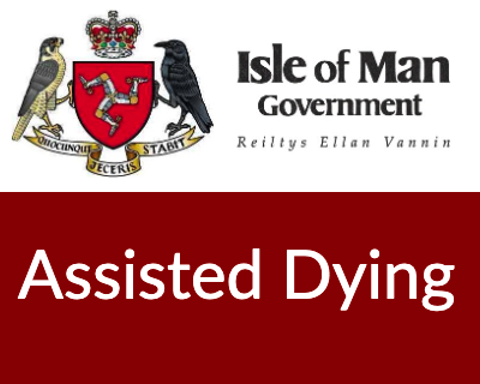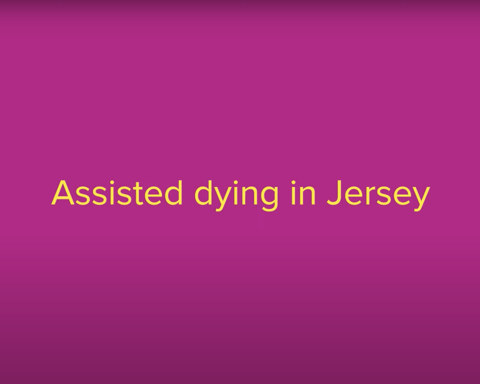Response to ‘Choice For Women: Wanted Pregnancies, Safe Births’ (DFID Consultation on Maternal Health)
Introduction
The Anscombe Bioethics Centre in Oxford is the oldest national bioethics centre in the United Kingdom, established in 1977 by the Catholic Archbishops of England and Wales. It was previously known as the Linacre Centre for Healthcare Ethics and was situated in London before moving to Oxford. The Centre engages with the moral questions arising in clinical practice and biomedical research. It brings to bear on those questions principles of natural law, virtue ethics, and the teaching of the Catholic Church, and seeks to develop the implications of that teaching for emerging fields of practice. The Centre engages in scholarly dialogue with academics and practitioners of other traditions. It contributes to public policy debates as well as to debates and consultations within the Church.
The Centre welcomes the opportunity to respond to the Department for International Development consultation on maternal health, Choice for women: wanted pregnancies, safe births recognising that this covers important ethical issues of wide concern. This response generally does not rely on premises held by Catholics only, except where this is explicitly stated. On the contrary, for the most part, the arguments presented are potentially acceptable to those of other faiths, and of no faith.
General comments
From the perspective of ethical medicine one of the greatest injustices is the global inequality in access to healthcare. This is seen in many areas but perhaps most starkly in the scandal of hundreds of thousands of women who die in childbirth. Hence the Catholic Church along with all men and women of good will welcomes practical efforts to improve safety in childbirth for those in developing countries.
The specific aim of improving maternal health is widely recognised as an urgent global need. Millennium Development Goal 5A is that between 1990 and 2015 the maternal mortality ratio (MMR) will be reduced by three quarters. The United Kingdom has committed itself to working towards this goal and it is heartening that in times of reduced spending DFID is making maternal health a priority for overseas aid.
Given the urgency of this goal and the pressure on funds it is essential to distinguish the safety of pregnant women from other goals with which it might be associated. In this regard the title of this consultation betrays a serious flaw, for it involves a conflation of two very different goals: that of making pregnancy safer and that of preventing unwanted pregnancies.
The prevention of unwanted pregnancies is an aim many people support, but it is emphatically not the same as the aim to make pregnancy safer. If contraception is effective in reducing the birth rate then it will proportionally reduce the number of deaths in childbirth, but that will not make birth safer. Contraception is of no benefit whatsoever for those women who are pregnant and who need support to give birth safely. Indeed if money is taken away from birth assistants and other initiatives that focus on childbirth, and instead is directed towards provision of contraception, then this could even make childbirth less safe.
If DFID wishes to help families to plan and space their children this must therefore be done with sensitivity to the wider cultural and ethical issues at stake. It would be in the interest of DFID to clarify the ethical distinction between abortion and contraception. If this were done explicitly then it would shed light on the problematic character of some DFID proposals in relation to abortion. In any case, the issue of preventing birth whether through contraception or termination of pregnancy should be clearly distinguished from the issue of safety in childbirth. The ethical issues here are very different and on that basis alone should not be conflated.
Responses to questions
1. What should we aim to achieve?
The primary element of Millennium Development Gaol 5 is the reduction of the maternal morality ratio (MMR) by three quarters. MMR is an approximate measure of the safety of each pregnancy. Reducing the number of pregnancies does not improve the MMR unless those pregnancies are less safe than average. A reduction in the number of safer pregnancies (for example the pregnancies of women in their 20s or 30s and wealthier women) will actually lead to a worsening of the MMR. More fundamentally, the reduction of the number of pregnancies (whether more or less safe) does not make pregnancy safer for women who are pregnant. It does not help them. It does not improve their condition. For this reason MMR is only an approximate measure of the key aim which is to make pregnancy safer for those women who are pregnant.
The first three aims suggested by DFID all relate to contraception, and the fourth relates to abortion. However, contraception will have no effect on helping those who are pregnant and who face the perils of the childbirth. There is an ethical reason to prioritise the safety of those who are pregnant. Their need is more urgent. Furthermore, directly addressing the dangers of childbirth will have a direct and reliable impact on MMR, which is the measure for MDG 5A.
In relation to abortion it is not the case that those countries with more restrictive abortion legislation consistently have higher MMR. For example, in 2005, MMR in Poland was estimated between 5 and 10 per 100,000 where MMR in Russia was estimated between 28 and 55 per 100,000. [1] Likewise a recent study of MMR rates in Chile showed that in the period from 1960 to 2007, MMR declined from 294 per 100,000 to 18 per 100,000, and this was against a background of tightening abortion legislation. [2] The worst MMR rates are in sub-Saharan Africa countries, many of which prohibit abortion, but these countries also suffer from poor health infrastructure, high rates of malaria and HIV and a myriad of other problems. There is no simple relation between abortion legislation and MMR.
Again, even if expanding abortion provision were thought to be the only way to reduce deaths subsequent to abortion (and this flies in the face of evidence from Chile and elsewhere), this would have no impact on deaths in childbirth, which (according to DFID) make up 87% of maternal deaths. In relation to MDG 5A it is clear that a reduction of three quarters cannot be achieved by addressing a cause that affects only 13% of maternal deaths. Furthermore, those who wish to protect the lives of unborn children will rightly resist any expansion of abortion provision. Thus by making this an element of the programme DFID risks provoking local and international opposition and creating problems of cooperation for otherwise sympathetic governments and NGOs (not least churches).
2. Which interventions should we prioritise?
Where should we focus our efforts along the continuum of care (pre-pregnancy, during pregnancy and birth and after delivery) and why, in order to have an impact on MDG 5 by 2015? What do you think is most important to tackle in order of time priority? Where appropriate please also indicate to which world region you are referring.
The suggestions given by DFID again start with contraception and abortion, neither of which address the needs of women who are giving birth, and neither of which would directly or reliably lower MMR, even if they successfully reduced the number of pregnancies. For reasons of ethics, efficiency and cost effectiveness priority should be given to interventions that immediately impact on women who are pregnant to help improve the safety of birth. This will nevertheless include addressing nutrition and treatment of diseases such as malaria and HIV as these will have a direct effect on the health of the mother.
3. Where should we work?
Where should we focus our efforts to advance progress on reproductive, maternal and newborn health? When posting your comment, please state whether it is an individual, group or organisational response.
DFID should work where it can work effectively and where others are not working. This is a matter of cooperating with other agencies and governments as the goal is a common global goal. In terms of identifying priorities, the DFID again begins with a suggestion that contraception is prioritised, whereas from reasons already stated this would be to neglect women who are facing childbirth and would also be a less direct and less effective way to address MMR.
If the stated development goal is to reduce MMR then some priority should be given to places where MMR is highest, and especially to places where MMR is high despite progress on other health indicators (nutrition, education, malaria and HIV etc.) as this would suggest a specific problem which could be addressed in a focused way. Nevertheless, international priorities should be set through multilateral cooperation as the ultimate goal is clearly beyond any one government or agency. This is a personal response informed by principles upheld by the Catholic Church.
4. How should we address inequality?
What are the most important approaches that DFID/UK should consider to tackle inequalities in reproductive, maternal and newborn health outcomes? When posting your comment, please state whether it is an individual, group or organisational response.
It is important to address inequalities but this is less important than to concentrate on the situation of the least well off. A country where the great majority have little access to healthcare may have less pronounced inequalities than a country such as the United States where the range of provision will be enormous. Nevertheless, what is important for the great majority of people is not equality but is access to basic healthcare.
John Rawls has argued convincingly that an unequal system can be just if the poorest are better off than they would have been in a more equal system. Nevertheless, efforts to improve the situation of the least well off will often (if not always) also reduce inequality. This is a personal response informed by principles upheld by the Catholic Church.
6. Which neglected and sensitive issues should we focus on?
We believe DFID has comparative advantage in tackling neglected and sensitive issues. Which neglected and sensitive issues should we prioritise in our work? Read background information Read options to consider When posting your comment, please state whether it is an individual, group or organisational response.
If the issue of delaying the first pregnancy is regarded a simply a matter of contraception then again it reflects the same starting point for much of this consultation. Contraception is not so much a neglected issue as an issue that threatens to obscure the urgent millennium development goal of improving the safety during childbirth.
A related issue that is neglected in this consultation is that of delaying marriage. This is a very different issue from the issue of unintended pregnancy by unmarried teenagers. Marriage is expected to lead to children, and more so if the wife is young. The age at which people marry is affected by level of education, though this may also be related to social class and aspiration. In general it is determined by a complex of cultural, religious and economic factors.
The most sensitive and neglected issue is the way in which religion plays a part in attitudes and practices from termination of pregnancy, to genital mutilation, to age of marriage. It is essential that religious and cultural factors are thus made part of the solution but this cannot be done without dialogue with religious bodies. This is a personal response informed by principles upheld by the Catholic Church.
7. How can we deliver better results through multilateral aid?
Taking into account the list in the background information provided, who do you think DFID/UK should work with to improve reproductive, maternal and newborn health? How can we work in order to deliver better results through multilateral aid? Please give reasons for the organisations you have chosen.
It is clearly important for DID to work with multilateral agencies such as those mentioned. Nevertheless, the inclusion on the list of UNFPA again raises the issue of whether a focus on family planning might obscure the key issue of safety in childbirth. Whichever agencies DFID works with it must therefore retain control so that funding is not diverted from childbirth to family planning.
8. How should we work with private and other non-state actors?
How should we work with private and other non-state actors more to deliver successful reproductive, maternal and newborn health outcomes? For instance, who should we target to work with, what more could we do at global and country level, and how could we go about building better links and relationships?
As working with multilateral agencies is important, so it is equally important to work with NGOs and other non-state actors if better progress is to be made towards achieving development goals. Among non-state actors DFID should not neglect to work with Catholic agencies and other religious organisations, as these have often established effective networks with local knowledge and cultural sensitivity in implementation of programmes.
Nevertheless, such effective cooperation will be made difficult if not impossible if DFID does not separate the aim of making childbirth safe from the aims of family planning and the provision of abortion. The primary aim of MDA 5A is to support women who are pregnant (from antenatal support, to assisting at the birth, to care for newborns) and this is not to be conflated with family planning or abortion. If this aim is made the basis for the DFID business plan then it will be easier to establish cooperation with non-state actors, and indeed with governments.
Given the focus of the Centre, this submission will not address questions 9 to 11.
12. If we could do only one thing to improve reproductive, maternal and newborn health outcomes, what should it be and why?
It should be some well focused intervention (such as training birth assistants) or some set of such interventions that address the immediate peril of women who face childbirth now.
This need is the most urgent. This is the most direct and reliable way to improve the global maternal mortality ratio and achieve Millennium Development Goal 5A. It is also the aim best suited to obtaining cooperation with non-state agencies, including the churches
Footnotes
- World Health Organization, World Bank, United Nations Population Fund & United Nations Children's Fund (UNICEF). (2007). Maternal mortality in 2005 : estimates developed by WHO, UNICEF, UNFPA, and The World Bank. World Health Organization. https://apps.who.int/iris/handle/10665/43807
- Koch E, Thorp J, Bravo M, Gatica S, Romero CX, Aguilera H, et al. (2012) Women’s Education Level, Maternal Health Facilities, Abortion Legislation and Maternal Deaths: A Natural Experiment in Chile from 1957 to 2007. PLoS ONE 7(5): e36613. https://doi.org/10.1371/journal.pone.0036613
Most recent
A Briefing on the Human Fertilisation & Embryology Authority (HFEA) consultation, ‘Modernising the regulation of fertility treatment and research involving human embryos’
27 March 2023
Our Briefing on the March-April 2023 HFEA consultation into the potential revision of Human Fertilis...
Anscombe Centre Submission to Isle of Man Consultation on Private Member’s Bill for Euthanasia and Assisted Suicide (EAS)
25 January 2023
From 01 December 2022 to 26 January 2023, a Consultation was held on a Private Member’s Bill introdu...
Anscombe Centre Submission to Government of Jersey Consultation on Euthanasia and Assisted Suicide (EAS)
16 January 2023
From 17 October 2022 to 14 January 2023, the Government of Jersey held a consultation on proposals t...
Support Us
The Anscombe Bioethics Centre is supported by the Catholic Church in England and Wales, Scotland, and Ireland, but has also always relied on donations from generous individuals, friends and benefactors.



